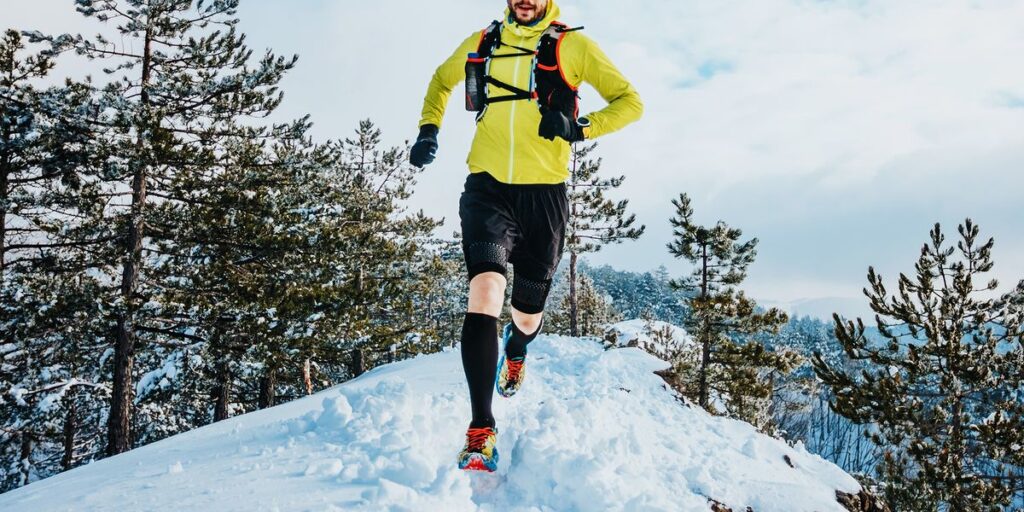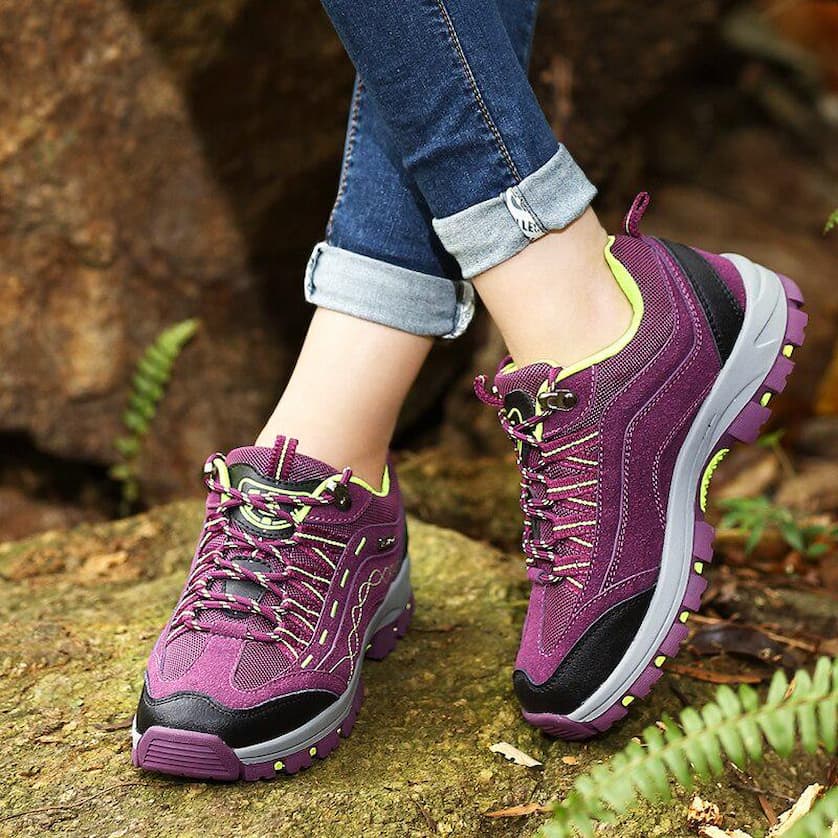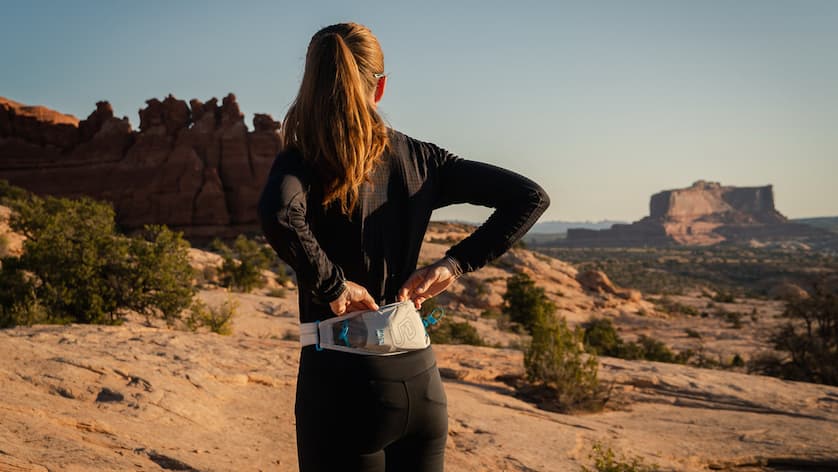We all know that running is one of the best forms of exercise. It’s beneficial for both our physical and mental health. But if you want to take it to the next level, try trail running. This activity involves running in unusual terrains, such as mountains and hills, where the road is not very smooth. Basically, leaving the pavement of the city and going for the dirt and grass in the woods.
There is something about running in the wild that inspires us as human beings. Our connection with nature gives us a sense of freedom and makes us feel happier. It also helps us concentrate and increases our instincts. It’s also good for our joints and muscle because dirt doesn’t put a lot of pressure on them as a sidewalk does. Plus, you’ll sharpen your willpower because there’s no train or a bus in the wilderness to help you get home.
What Do You Need for Trail Running?
But when you’re going trail running, you can’t just put on your shoes and head for the hills. It requires special running gear that will help you through your journey. Comfortable shoes made for those trails, proper clothing to keep you dry, head protection and of course, hydration.

Hydration Vest
When you’re having a running session, keeping yourself hydrated is very important. The best decision you can make is to buy the practical running hydration vests that are very popular among trail runners all over the world. The first thing you need to do is make sure that the vest has enough capacity, measured in litres.
If you’re going on a 2-hour run, a 2l one will suffice. If you’re going for 3 hours you should get a 2-6l one and if you’re going to run for more than 6 hours, make sure you take a vest with the capacity of 4-12l.
Most vests are designed to hold water in one of two ways: in water bottles that tuck into the front of the vest or the second way, in a hydration tank that slides into a back sleeve. While a reservoir can usually contain more water and is simpler to use while on the go, bottles can be quicker and easier to refill.
Some runners avoid bottles because oftentimes they’re made from soft materials that get easily punctured. Reservoirs have a bigger capacity and will hold more water, but the bottle gives you more control and adds versatility.
The vest should fit snugly to prevent any movement as you run. To get the ideal fit, follow the manufacturer’s sizing recommendations if they have any. Their measurement of your body’s circumference may differ from one size chart to another so make sure you measure anywhere you try them on.
Don’t get a vest that’s too big or too tight. The first will shift around and interfere with your running, and the second will obstruct your breathing and running.
Many vests also have additional features such as pockets, can be reflective which comes in handy during the night, have a built-in whistle, or even have places where you can store the trekking poles. These vests are usually breathable, which is a great feature. They’ll provide your skin with some airflow.
Adjustable straps are also a big plus. You can tighten or loosen the vest according to your needs. There are special women running hydration vests, that are wider in the bust and narrower in the shoulders. You can also go for water filter bottles, but they take more time to refill and you can’t drink the water as soon as you pick it up.
Clothes
When you want to buy running clothes always think about breathability and protection. Of course, your personal preferences and your body’s needs will dictate the choice as well and don’t forget about comfort and durability.
Trail jackets are lightweight with a 2-layer system that offers breathability and protection from the natural elements at the same time. The hem, cuffs and hood might have an elasticated rim so no wind and water can enter your sleeves or your torso.
The running top should be made of soft fabric that’s moisture-wicking, breathable, durable and dries quickly, at the same time. The materials that fit this description are merino wool and polyester, whichever you choose, you won’t regret it.
Long sleeves, a high neck, and merino textiles are important considerations for wintertime temperature control, while summertime provides the opportunity for lightweight vests made of synthetic fibres.
There are many possibilities when picking trail running pants. Before you discover the one that most closely matches your comfort level, you’ll probably check out a few various kinds. Extremely light shorts are ideal for warm weather but offer no support and little covering.
On the other hand, full-leg running tights provide some support, making them ideal for chilly, snowy weather. You might choose 3/4-length tights or twin-skin-style shorts for all those transitional days.
Shoes

Trail running shoes are different from regular road runners in several ways. They have soles that improve the traction and will help you move with more stability over rocks, dirt, gravel, mud and roots. They’re made from durable upper materials that protect your feet from bumping into rocks and roots and withstand abrasion and tears. There are 3 types of trailing shoes:
Light Trail – modest protection, lightweight, soles with shallow lugs, stable foot placement;
Rugged Trail – toe guards, sturdy materials, resilient cushioning, good stopping power;
Off Trail – resilient material, good torsional rigidity; waterproof.
There are several types of cushioning you can choose from depending on your personal preference and the trail that you’ll run on. There are shoes with no padding at all, and shoes with minimal padding that aren’t comfortable without any cushioning. The moderate ones are considered regular and the maximum ones have a lot of cushioning and padding. They work best with your muscles and joints.
The fit is also very important. Always try the shoes on you. Never assume that the size will be right and they’ll fit just right. Different shoes may require different sizes because as you run, your legs will swell. Also, as you get older your body changes and so are your feet.
Accessories

Besides a running vest and other clothing essentials, there are some accessories you should have with you while you’re trail running, and a watch is one of them. Before buying consider its battery life span. You don’t want to worry it’ll shut down especially if you’re on a long trail.
The watch should have navigation because trails can be very confusing and complicated. Sometimes they have a complete colour map and voice directions for every turn.
They should be durable and have a heart monitor and a barometric altimeter so you can know what’s the current temperature and air pressure. This watch needs to be weather resistant because you’ll be facing winds, rain, snow and heat during your sessions.
If you’re a fan of running belts, you probably know that choosing one is not an easy task. You first need to think about the right fit and measure your hips. The fit must be snug but not too tight.
Pick a pouch size that won’t be too big and distract you during your run or a small one that won’t fit the things you need. Go for high-quality materials such as neoprene, which is lightweight, durable and elastic.
Keeping your head protected from the heat or the rain is another thing to consider. This is where the caps come into play. They also sweep away any sweat and allow airflow at the same time. You can buy a visor instead, but a cap will do a better job of keeping you safe and protected.











